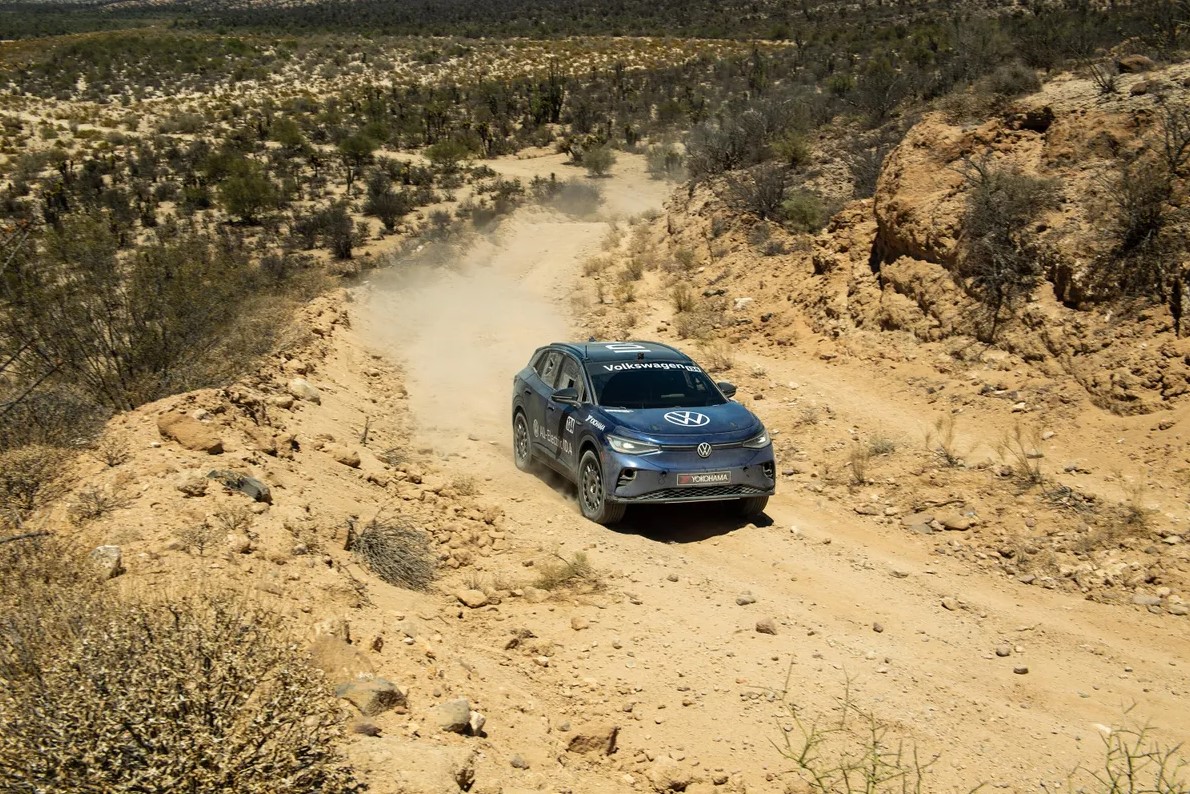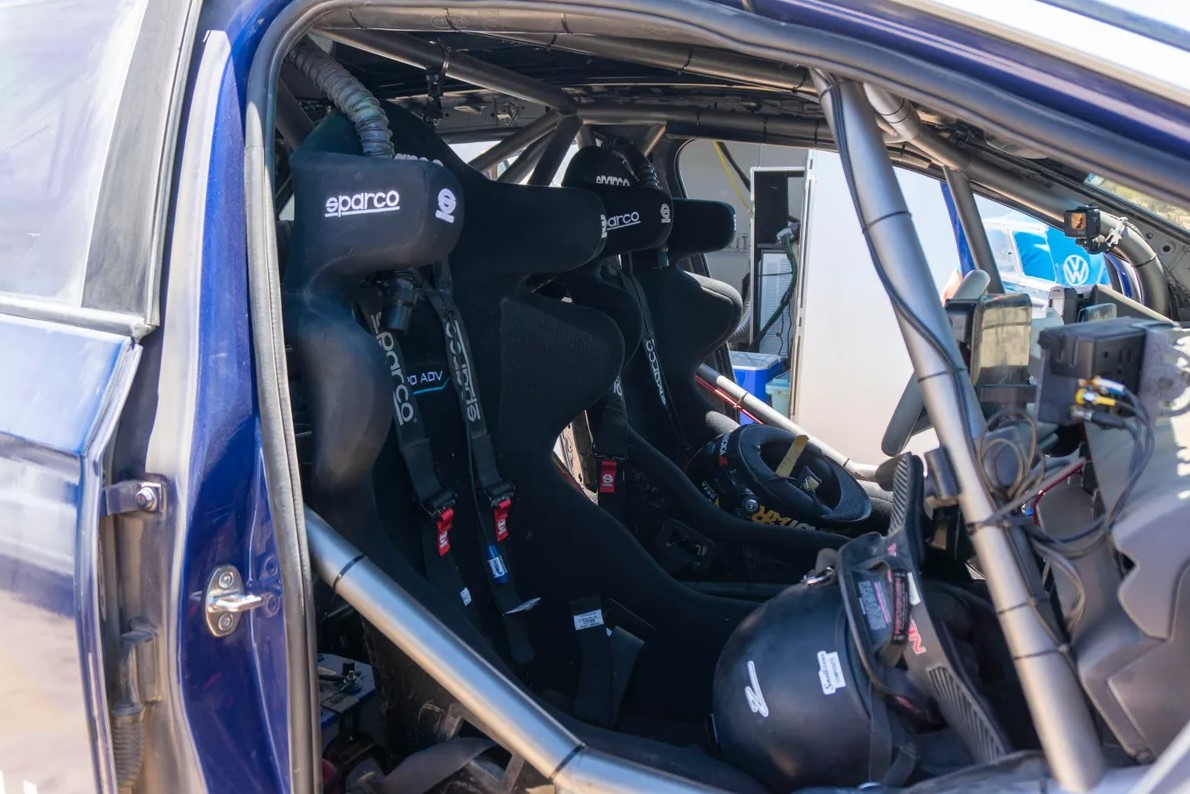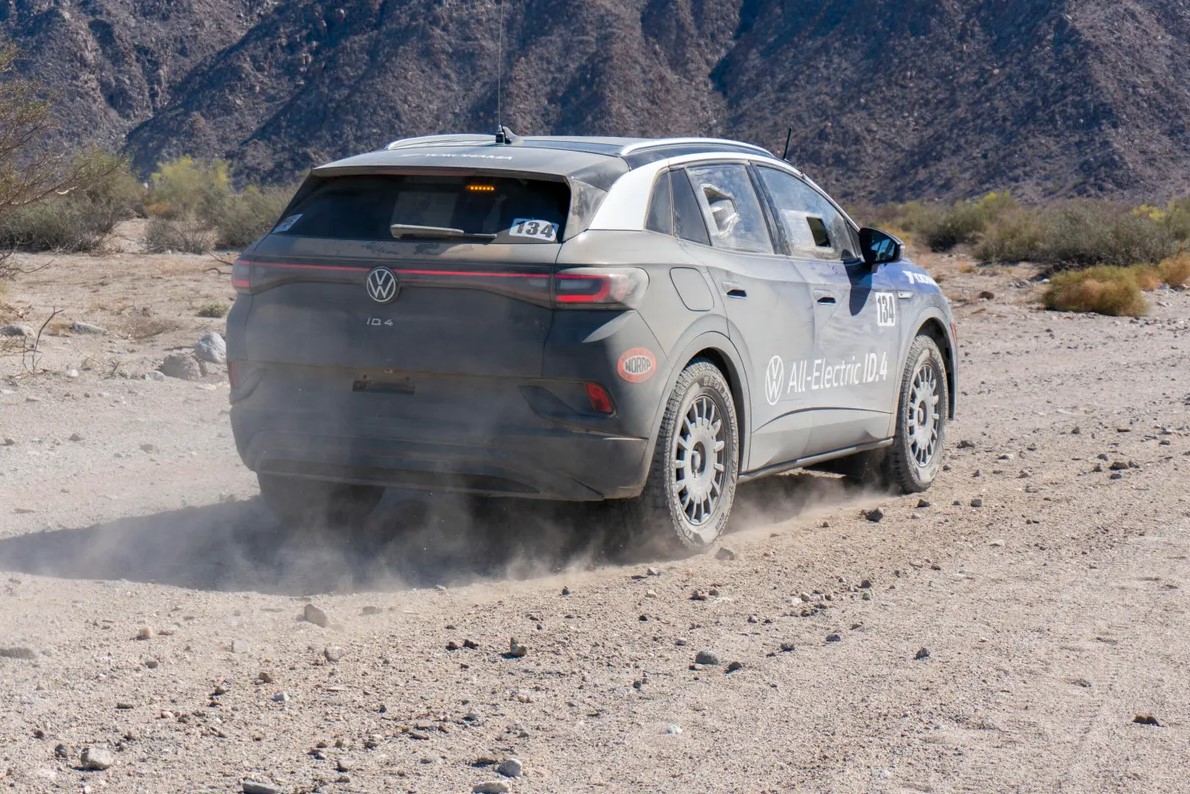2026 Volkswagen ID 4 Performance, Specs, Review – I had the opportunity to race VW’s electric ID 4 over the sand and mud of Baja, despite Tanner Foust being the best driver. Despite winning the 2021 Mexican 1000 off-road rally title from the National Off Road Racing Association, Tanner Foust was unable to make it to the starting line.
To be fair, it wasn’t his fault. He was driving the electric 2026, so the traffic-directing officer didn’t hear him coming. Despite starting with the same set of Yokohama Geolander A/T tires, this little SUV barely survived the approximately 1,000 kilometers of challenging terrain before coming to an end five days later.
The Mexican 1000, like the Baja 1000, passes through some of the most desolate parts of Mexico’s Baja Peninsula. The rally this year started in Ensenada, went south to San Felipe and the Bay of Los Angeles, then went back north for one more night in San Felipe before heading back to Ensenada. Five days passed at the time. Teams were given a GPS trace and a roadbook detailing potential dangers, but they were not allowed to prerun the circuit. 2026 Volkswagen ID 4 Performance
2026 Volkswagen ID 4 Redesign and Update Plan
Exterior & Interior
Rhys Millen, a seasoned fabricator and owner of the Baja racing squad, upgraded the ID 4 by adding two rally shocks, skid plates, and 18-inch wheels clad in 255/70 Geolanders. For safety, a cage, Sparco racing seats, and five-point harnesses were installed. On another panel, the crew may examine details regarding the battery’s temperature, capacity, and remaining range.
Vehicle number 134 just used the rear wheels to transfer power because VW does not now provide an all-wheel-drive ID 4. For reasons that will soon become clear, this is risky in Baja. The road-going Pro S ID 4’s electric engine can generate 201 horsepower and 229 pound-feet of torque, and its 82-kilowatt-hour battery can go around 250 miles under ideal conditions.
Volkswagen was uncertain about the ID 4’s single-charge endurance in Baja. The rally is really a crapshoot since every day is so different. When estimating the car’s range, the range estimator takes into account the past few days of driving.
Instead, driver Tanner Foust and co-driver and Volkswagen engineer Aldrich To kept an eye on consumption and tried to keep it at an average of 1.6 miles per kWh. On a dry lakebed, Foust reached 107 mph; however, at really high speeds, this figure would decrease. On the level dirt roads, however, the average may increase once again. 2026 Volkswagen ID 4 Performance
2026 Volkswagen ID 4 Specs
Engine & Performance
The worst mechanical problem with the ID 4 happened on the first day. The first exceptional step was when the aftermarket rear shock mounts failed. Foust completed the stage when the team swapped out the improved rally shocks for the normal setup. This would slow the car down a bit and give it a very bouncing rear end for the rest of the rally. But the ID 4 was never very quick. You can only go so fast with just around 7 inches of ground clearance and a little extra wheel travel.
Driving on the second day, of course, exposed the ID 4’s physical limitations. The ID 4 had its own LS-powered buggies and was a sweep vehicle. The idea was that if the ID 4 became stuck, the buggy could pull it out, saving us from having to wait for NORRA’s official rescue vehicle. However, due to electrical issues that resulted in overheating, the buggy wasn’t always directly behind the ID 4.
Additionally, you should know that the ID 4 was devoid of any recovery equipment. Self-recovery wouldn’t be required because the buggy’s authors expected it to always be with the ID 4. But as you might have guessed from reading about my off-road adventures, I never leave home without a pair of Maxtrax.
All of this became significant as we turned a curve and came upon a little slope of soft, thick sand with ruts two feet deep. I was driving and Foust was in the right seat. A rear-wheel drive car can navigate soft sand, but it must go quickly. We did not have the authority or the travel to keep up our pace. Despite our imprisonment, we successfully completed the course. Our recovery car? An engine is overheating somewhere behind us.
Foust and I did our best to dig out using some flip-flops he had stored in the car until after the event. We aired down, put stones in front of and behind the tires, and looked at a few snakes because the rear-wheel drive ID 4 was not moving very far without a tow or some Maxtrax.
Using the ID 4’s regenerative braking technology rather than the mechanical brakes altogether, I took over the wheel for one more level. Similar to driving the Rivian R1T in the Rebelle Rally, operating the ID 4 involved determining the optimum lines, using the regen brakes as much as possible, moving smoothly on the throttle, and attempting to avoid making any mistakes. Even though I was nervous since a rally champion was sitting shotgun as we drove the ID 4 across Baja, Foust was gracious enough to give me a free driving lesson.
When the recovery buggy finally arrived at our location, the official NORRA rescue vehicle also became stuck in the sand. When our large chase vehicle eventually found a hard-packed dirt access path and brought some recovery boards, we were back on the road in fifteen minutes. Unfortunately, we lost too much time that day, and the stage closed before we could cross the finish line.
But for the rest of the rally, there were almost no problems. The ID 4 needed to be tow-charged in order to finish a 167-mile special stage; it was pulled behind the sweep buggies in order to generate 20 kW of regenerative energy. Additionally, the rules do not specifically say that a vehicle cannot refuel while completing a single stage. Some of the gas-powered race cars really needed to be refueled for the longer stages. For it, they utilized a gas can. This was accomplished by the Volkswagen using a tow. 2026 Volkswagen ID 4 Performance
2026 Volkswagen ID 4 Fuel Economy
The charging took place in a trailer equipped with a 50-kW charger that was driven by a biofuel generator. The crew had to use the infrastructure they already had, even if charging using a generator isn’t the ideal option. Mexico now has a large number of petrol stations, but not enough charging stations. At the same time as the race’s pavement transit sections, the ID 4 climbed into its trailer to recharge its battery and go to the next special stage.
The ID 4 traveled 113 miles on its longest special stage throughout the week, averaging 1.6 miles per kWh. The VW’s average range of 125 miles on a single charge when driving on dirt roads may be more than half of the 250 miles the ID 4 Pro S should cover on paved roads under normal driving circumstances. (According to the EPA, the lower-tier pro scores 260.)
The ID 4 did not win the NORRA Mexican 1000. Out of 64 finishers, it really ended in 61st place since 26 riders did not complete. However, as the ID 4 was the first completed electric car, its production-based nature is truly the cherry on top.
In their most recent attempt to compete in the San Felipe 250, Lordstown Motors’ Endurance pickup truck barely traveled 38 miles. With careful planning and logistics, the 2026 finished 840 kilometers of hard dirt racing. Privateers and other manufacturers are now expected to come to Baja and surpass it.
Note: The details included in this blog post are derived from pre-release material that was accessible when the article was written. If you want the latest information, you should check official sources or call your nearest dealership.
Read Also:
- 2026 Volkswagen BUDD-e Release Date, Specs, Interior
- 2026 Volkswagen Taos Features, Specs, Price
- 2026 Volkswagen Tiguan Redesign, Specs. Review
- 2026 Volkswagen Jetta Review, Specs, MPG
- 2026 Volkswagen Atlas Review, Specs, MSRP



